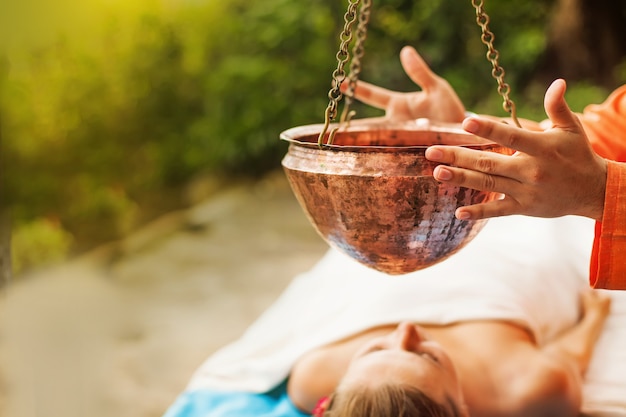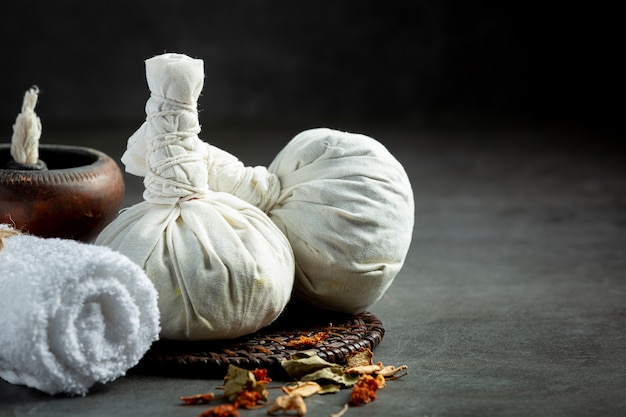आयुर्वेदिक डॉक्टर से प्रश्न पूछें और निःशुल्क या भुगतान मोड में अपनी चिंता की समस्या पर ऑनलाइन परामर्श प्राप्त करें। 2,000 से अधिक अनुभवी डॉक्टर हमारी साइट पर काम करते हैं और आपके प्रश्नों का इंतजार करते हैं और उपयोगकर्ताओं को उनकी स्वास्थ्य समस्याओं को हल करने में प्रतिदिन मदद करते हैं।
अभी हमारे स्टोर में खरीदें
Uttarbasti Procedure in Female: A Comprehensive, Research-Based Overview

Introduction
Uttarbasti (sometimes written as “Uttar Basti”) is an Ayurvedic therapeutic procedure that has garnered increasing attention in recent years. Often cited for its potential benefits in addressing various female gynecological conditions—ranging from menstrual irregularities to infertility—Uttarbasti involves administering medicated oils or herbal decoctions directly into the uterine cavity. While considered a classical treatment in Ayurveda, modern research is beginning to explore its mechanisms and efficacy, providing a scientific framework that can help practitioners and patients alike make informed decisions.
In this article, we will unpack the Uttarbasti procedure in female patients through a scientific lens, citing both traditional Ayurvedic texts and contemporary medical research. We will also discuss its practical applications, potential benefits, associated risks, and evolving role in integrative healthcare.
Table of Contents
- What Is Uttarbasti?
- Ayurvedic Foundations
- Mechanism of Action
- Indications and Possible Benefits
- Scientific Evidence
- Preparation and Step-by-Step Procedure
- Safety, Side Effects, and Precautions
- Contemporary Views and Ongoing Research
- Frequently Asked Questions (FAQs)
- Conclusion
1. What Is Uttarbasti?
Uttarbasti is a specialized Panchakarma procedure in Ayurveda where medicated liquids—commonly herbal oils or ghee—are introduced into the female reproductive tract. In simple terms, it is the process of instilling therapeutic substances into the uterus through the vagina and cervix. Unlike oral medications that circulate systemically, Uttarbasti targets the local reproductive organs, potentially reducing the likelihood of systemic side effects.
Key Points:
- Local Delivery: Targets the uterus, cervix, and surrounding tissues.
- Customizable Therapy: Specific herbal formulations may be tailored to each patient’s constitution and health condition.
- Historically Rooted: Described in classical Ayurvedic texts such as the “Charaka Samhita” and “Sushruta Samhita.”
2. Ayurvedic Foundations
In Ayurvedic medicine, the balance of the three doshas—Vata, Pitta, and Kapha—is considered crucial for overall health. Gynecological and reproductive disorders are often attributed to doshic imbalances, particularly involving Apana Vata, the sub-dosha responsible for reproductive and eliminative functions.
Role of Uttarbasti in Ayurveda
- Pacifies Vata: Because Apana Vata governs menstrual flow and reproductive health, Uttarbasti is believed to help restore its balance.
- Detoxification and Nourishment: It is often described as both “shodhana” (cleansing or detoxifying) and “shamana” (pacifying or harmonizing) therapy.
- Rasayana (Rejuvenation): Certain herbal oils used in Uttarbasti are considered rejuvenative, potentially enhancing fertility and uterine health.
3. Mechanism of Action
While the Ayurvedic explanation focuses on doshic balance, modern science views Uttarbasti from a physiological and biochemical perspective. Although comprehensive clinical trials are still growing in number, preliminary studies and case reports suggest the following potential mechanisms:
- Local Anti-Inflammatory Action: Many herbal oils used in Uttarbasti contain anti-inflammatory compounds (e.g., curcumin from turmeric or glycyrrhizin from licorice), which may help reduce inflammation in the uterus and cervix.
- Enhanced Endometrial Receptivity: Some oils may improve endometrial thickness and quality, potentially beneficial for women trying to conceive.
- Antimicrobial Effects: Certain herbs, such as neem (Azadirachta indica), are known for their antimicrobial properties, which could combat bacterial or fungal infections.
- Hormonal Balance: Though more research is needed, practitioners suggest that Uttarbasti may help regulate hormonal pathways that impact menstruation and fertility.
4. Indications and Possible Benefits
Common Indications
- Menstrual Irregularities: Heavy bleeding, painful periods (dysmenorrhea), or irregular cycles.
- Infertility and Subfertility: Particularly when the cause involves uterine factors or mild endometrial issues.
- Recurrent Urinary Tract Infections (UTIs): Some Ayurvedic practitioners use it to help reduce chronic UTIs due to its potential antimicrobial effect.
- Pelvic Inflammatory Disease (PID): May aid in controlling inflammation and infection.
Potential Benefits
- Reduced Pelvic Pain: Anti-inflammatory herbs can help alleviate localized pain.
- Improved Fertility Outcomes: Enhanced uterine health can translate to better odds of conception, according to anecdotal and preliminary clinical findings.
- Hormonal Regulation: May complement other treatments aimed at regulating hormones like estrogen and progesterone.
- Preventive Care: Some practitioners use Uttarbasti prophylactically to maintain uterine health in perimenopausal women.
5. Scientific Evidence
Growing interest in evidence-based Ayurvedic practices has led to some peer-reviewed studies that shed light on Uttarbasti’s efficacy:
- Case Study on Menstrual Disorders (Journal of Ayurveda and Integrative Medicine, 2019): A small sample trial reported that patients receiving Uttarbasti for dysmenorrhea experienced noticeable relief in pain intensity and duration.
- Pilot Study on Fertility (International Journal of Research in Ayurveda and Pharmacy, 2021): Women with unexplained infertility showed improved endometrial thickness and marginally higher conception rates after undergoing a series of Uttarbasti sessions.
- Review Article (Complementary Therapies in Clinical Practice, 2020): Highlighted Uttarbasti among other Panchakarma procedures for its potential role in reducing pelvic inflammation and improving uterine health, though more large-scale studies are needed.
While these findings are promising, larger randomized controlled trials are still lacking. Future research may clarify its effectiveness as a standalone therapy or an adjunct to conventional treatments such as assisted reproductive technologies.
6. Preparation and Step-by-Step Procedure
6.1 Pre-Procedure Assessment
A qualified Ayurvedic practitioner or a healthcare professional trained in integrative gynecology typically conducts:
- Medical History Review: Includes past menstrual, obstetric, and sexual history, as well as any pre-existing medical conditions.
- Physical Examination: Pelvic exam to assess uterine position and rule out contraindications such as active infections.
- Laboratory Tests (if needed): Could include hormonal assays, ultrasound, or tests to rule out sexually transmitted infections.
6.2 Pre-Procedure Cleansing (If Advised)
Some practitioners recommend a mild internal cleansing (e.g., mild laxative or basti therapy) to reduce any potential aggravation of the doshas. Light meals, avoiding heavy or spicy foods, and ample hydration are also advised.
6.3 The Uttarbasti Procedure
- Patient Positioning: The patient usually lies in a lithotomy position (similar to a standard gynecological examination).
- Sterilization: The healthcare professional cleanses the vaginal area with an antiseptic solution.
- Instrument Preparation: A sterile, disposable catheter or cannula is used for instillation of the medicated oil or decoction.
- Medicated Oil/Decoction: Warmed to body temperature; common ingredients may include sesame oil infused with herbs like ashwagandha (Withania somnifera), shatavari (Asparagus racemosus), or neem.
- Instillation: The practitioner gently inserts the catheter through the cervix and releases the medicated substance into the uterine cavity.
- Retention: The patient is instructed to remain in a relaxed supine position for a few minutes to allow the medicated oil to be absorbed.
- Post-Procedure Rest: Depending on the protocol, the patient may rest for up to 30 minutes.
- Clean-Up: Any excess oil is wiped away, and the patient is advised on post-procedure care.
6.4 Post-Procedure Recommendations
- Dietary Guidelines: Warm, easily digestible foods; reduced intake of processed and spicy items.
- Lifestyle Advice: Avoid strenuous activities, sexual intercourse, or heavy lifting for at least 24–48 hours.
- Follow-Up Sessions: Some treatment protocols recommend multiple sessions—anywhere from three to eight cycles—depending on the condition.
7. Safety, Side Effects, and Precautions
Although Uttarbasti is generally considered safe when performed by a qualified practitioner, certain precautions are essential:
- Infection Risk: Introducing substances into the uterus carries a risk of infection if not performed under sterile conditions.
- Allergic Reactions: Some individuals may be allergic to particular herbs or oil bases. A patch test or prior allergy check is prudent.
- Contraindications:
- Active Infections: Bacterial vaginosis, candida, or sexually transmitted infections should be treated first.
- Pregnancy: Typically contraindicated due to the risk of disturbing the uterine environment.
- Severe Gynecological Conditions: Fibroids, advanced endometriosis, or malignancies require specialized medical attention.
It is vital to seek a healthcare provider who has formal training and experience in both Ayurveda and gynecological procedures for optimal safety and efficacy.
8. Contemporary Views and Ongoing Research
Integrative Medicine Perspective
Modern integrative clinics often incorporate Uttarbasti as part of a broader treatment plan, which may include:
- Nutritional Counseling: Balanced diet to support hormonal health.
- Yoga and Meditation: Stress reduction techniques that may help regulate hormones like cortisol and prolactin.
- Conventional Medical Treatments: Hormone therapy or IVF (in vitro fertilization), especially in cases of infertility.
Future Research Trajectories
- Randomized Controlled Trials (RCTs): Needed to evaluate Uttarbasti’s efficacy in large, diverse populations.
- Standardized Protocols: Differing herbal formulations can complicate scientific evaluation. Standardizing recipes and dosages may improve reproducibility of results.
- Mechanistic Studies: Investigations into how specific herbs modulate local immune responses and hormonal pathways could provide a clearer scientific foundation.
9. Frequently Asked Questions (FAQs)
Q1: How many Uttarbasti sessions are typically needed?
Answer: The number of sessions varies based on the individual’s condition and practitioner’s protocol. It can range from three to eight sessions, sometimes spaced weekly or over the course of a menstrual cycle.
Q2: Is Uttarbasti painful?
Answer: Most women report mild discomfort rather than pain. The procedure involves gentle catheterization of the cervix, which can be slightly uncomfortable but is usually well tolerated.
Q3: Can Uttarbasti help with infertility?
Answer: Preliminary studies and anecdotal evidence suggest it may improve uterine health and endometrial receptivity. However, it should be part of a comprehensive treatment plan tailored to the specific cause of infertility.
Q4: What herbs are commonly used in Uttarbasti?
Answer: Herbs such as ashwagandha, shatavari, neem, aloe vera, and triphala-infused oils are often used. The exact mix depends on the practitioner’s assessment and the patient’s doshic imbalance.
Q5: Are there any known side effects?
Answer: Potential side effects can include mild cramping, vaginal irritation, or transient spotting. Allergic reactions are rare but can occur, especially if the patient is sensitive to particular herbal ingredients.
10. Conclusion
Uttarbasti procedure in female care is an intriguing blend of ancient Ayurvedic wisdom and emerging modern science. By focusing on localized administration of medicinal substances to the uterus and cervix, it offers a potentially safe and targeted approach to managing various gynecological conditions, including menstrual irregularities and certain types of infertility. Early clinical studies hint at its effectiveness, particularly when integrated with evidence-based Western medical practices and lifestyle modifications.
However, it is crucial to approach Uttarbasti with a balanced view. While it has shown promise, more large-scale, high-quality research is needed to confirm its efficacy and pinpoint its mechanisms of action. For those considering this procedure, consulting a trained medical professional—preferably one familiar with both Ayurveda and conventional gynecology—is paramount. Always discuss your full medical history and current treatments to ensure a well-rounded, safe therapeutic experience.
Call to Action
If you found this article helpful, share it with friends, leave a comment on your experiences, and subscribe for more in-depth articles on integrative health procedures. Your feedback and questions can help shape future research and bring more attention to this unique approach in women’s healthcare.
Medical Disclaimer
The information provided in this article is for educational purposes only and should not be considered as a substitute for professional medical advice, diagnosis, or treatment. Always seek the advice of your physician or other qualified health providers with any questions you may have regarding a medical condition.
यह लेख वर्तमान योग्य विशेषज्ञों द्वारा जाँचा गया है Dr. Harsha Joy और इसे साइट के उपयोगकर्ताओं के लिए सूचना का एक विश्वसनीय स्रोत माना जा सकता है।



